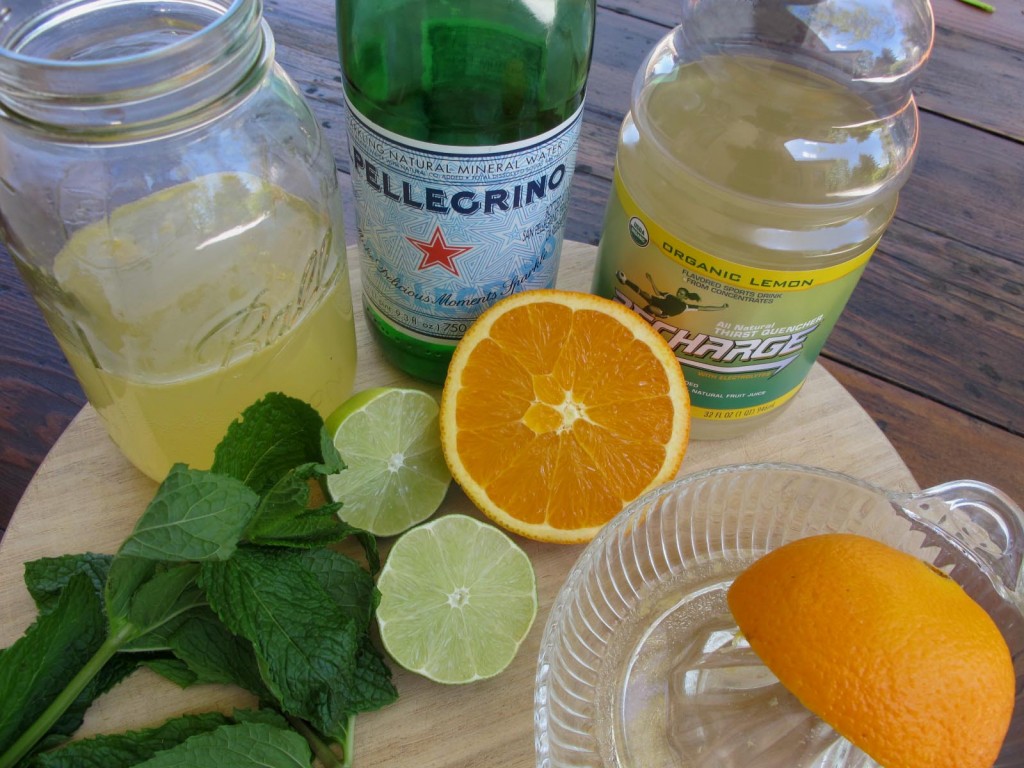This is the scene I was rewarded with a couple of years ago while backpacking in the Colorado high country. It was definitely worth the climb (summit 13,951 feet) and although I kept my distance in respect to my mountain goat friends, I thoroughly enjoyed our meeting.
When Maggie and Amy asked me to do a guest post at The Balanced Platter and explained that June’s editorial calendar included the theme, traveling on a GF diet, I immediately thought of high-country travel—as in backpacking. No cars, trains, or airplanes needed—just a good pair of hiking boots and a loaded backpack.
So—what does it take to fuel your engine and nourish your body for “peak” performance? Follow these basic tips for sustained energy (a long day on the trail) and quick bursts (climbing the last 500 feet to the summit). You’ll also need some turbo-charged recovery food so you can sleep well, climb out of your tent at the crack of dawn, make a hearty breakfast, and start all over again—day after day. That’s what backpacking is all about—sustained energy. And yes, I call that traveling on a GF diet.
These are basic eating strategies for all-day energy. Although sometimes one category serves the purpose better than another, most meals and snacks are a mixture.
Complex carbs
High-fiber, complex carbs will help you plod along for long hours on the trail. They provide more sustained energy because they’re digested (broken down) more slowly than simple sugars. Oats, brown rice, quinoa, teff, granola, and buckwheat are all examples of complex carbs. Start the day with a blend of carbohydrate (complex and simple), protein, and fat. Oatmeal with dried fruit, nuts, and brown sugar is a perfect way to start the day.
Simple carbs
Say you’ve been hiking along at a moderate intensity for 3 or 4 hours and you realize you’re about a half an hour away from a very steep 500 foot climb to the summit. You need a quick fix and that comes in the form of fast burning, simple carbs like GF jelly beans, dried fruit, honey, or chocolate chips. They’re easy to digest and the simple sugar goes immediately to your working muscles and nervous system.
Fat
High-quality, slow-burning fats are essential for backpacking. They provide more calories (energy) per gram, which you need when you’re physically active all day. Fats give you staying power. Mix them with complex carbs for long-lasting fuel. Nuts, seeds, coconut, and jerky (salmon, beef, bison provide fat and protein), cheese, and sausage are great choices for backpackers.
Protein
Many of the complex carbs (teff, quinoa, oats) and fats (jerky, nuts, seeds) all provide a good dose of protein as well. Protein helps repair the muscles and connective tissue you break down during long hikes. Protein is essential for recovery.
Nutrition bonus
Backpacking is physically demanding and stresses the body in many ways. I like to dehydrate nutrient-dense, hearty greens (kale, spinach, chard) and create my own dry soup mixes for a daily nutrition bonus of antioxidant protection. Hearty greens dehydrate well, weigh next-to-nothing, and rehydrate immediately. They’re perfect for backpacking. Mix the dehydrated greens with instant potato flakes and a gluten-free chicken base for a satisfying and nutritious side soup. At camp, all you have to do is add boiling water to the dry mix, stir, cover, and let sit for 5 minutes.
Granola-Style Energy Bars (Perfect to make ahead and eat on the trail)
Makes 16 bars
Courtesy of The Gluten-Free Edge: A Nutrition and Training Guide for Peak Athletic Performance and an Active Gluten-Free Life (by Peter Bronski & Melissa McLean Jory)
What you need
1/4 cup almond meal
2 tablespoons raw shelled hemp seeds
1 teaspoon ground cinnamon
1/4 teaspoon salt
1 cup pecans
1 cup almonds
1 cup unsulfured dried apricots (about 6 ounces), chopped into chunks
1/4 cup certified gluten-free, rolled oats
1/2 cup chocolate chips
1/3 cup maple syrup (grade B is thicker)
1 large egg
1 tablespoon coconut oil, melted, plus some to grease the pan
1 teaspoon gluten-free pure vanilla extract
What you do
1. Preheat oven to 350 degrees. Grease a 9-inch square pan.
2. Place the almond meal, hemp seeds, cinnamon, and salt in a food processor and pulse until well mixed.
3. Add the pecans, almonds, oats, and apricots and pulse several times until the nuts are in small chunks but not completely ground. Add the chocolate chips and pulse a few times, leaving larger chunks.
4. In a medium bowl (big enough to hold all the ingredients), whisk together the maple syrup, egg, melted coconut oil, and vanilla. Whisk for 1 minute to ensure all ingredients are mixed.
5. Add the wet ingredients to the dry ingredients and mash together with a fork. Use your hands if you have to.
6. Spread the mixture in the prepared pan. Cover with parchment paper, and using your hands, flatten evenly. You can also use an unslotted spatula to flatten the mixture.
7. Place on the center rack in the oven. Bake for 22 to 24 minutes, until golden brown. Remove from the oven and let cool. Place the pan in the refrigerator to chill before cutting into bars. Store in an airtight container in the refrigerator.

Peace, love, and happy trails from The Balanced Platter!
Melissa
PS Leave us a comment sharing your favorite gluten-free hiking snack.

















